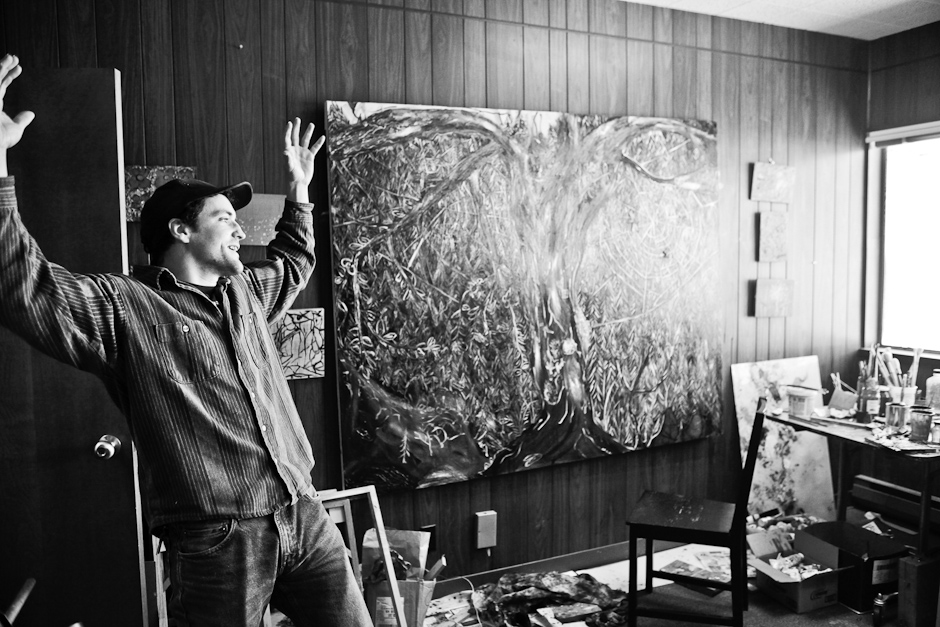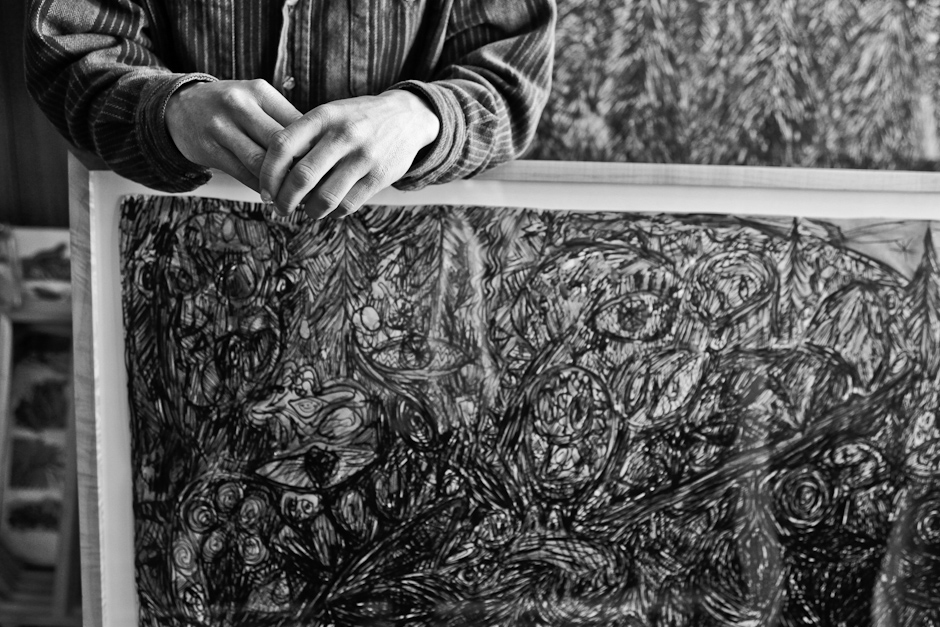
Peter Scherrer

Bellingham, Washington sits just 17 miles south of the US-Canada border— tucked up into the furthermost corner of the United States, it’s a last stop kind of place, the end of the line, where journeys halt and then either drift out into the Pacific Ocean or cross over into Canada’s sprawl. We went to Bellingham to visit Peter and in his small, cramped studio, that’s situated right along the coast we talked about his paintings, fatherhood, and the distinct climate and culture of the Pacific Northwest.
Surprisingly, our WESTERN EDGE trip was the first time I had ever travelled north of California and as we slowly closed in on the Canadian border I became increasingly aware of just how different the Pacific Northwest region is from any other place I’ve traveled to. There is an undeniable Americanness to it; there’s a palpable wildness to the land, a riot of growth and density in the trees, the bushes, the grasses, and too many hues of green to count. A real pioneer-like spirit seems apparent amongst most of its people, a rough and readiness, a rare mix of stoicism and vulnerability that I imagine is somewhat rooted in withstanding long dark winters, isolation, and countless days of rain. And there is a shabbiness, too, a bruised history, especially in some of the smaller towns… that hints at struggling economies, fractured communities, unfulfilled possibilities…
Born and raised and in Washington, Peter brings a delicate, native understanding to his paintings to create imagined landscapes of impossible lushness that radiate with chaos, hostility, and humor. Working in both watercolor on paper and oil on canvas, his pieces manage to expand and further complicate our views on nature— by loosely considering Romanticism, our history of exploration and settlement, hippie idealism, and his own personal experiences growing up in the region, Peter confronts our flawed relationship with the nature world. By combining equal measures of terror and kooky humor Peter work demands that we reconsider our often messy, sometimes well-intentioned attempts to make the natural world known.

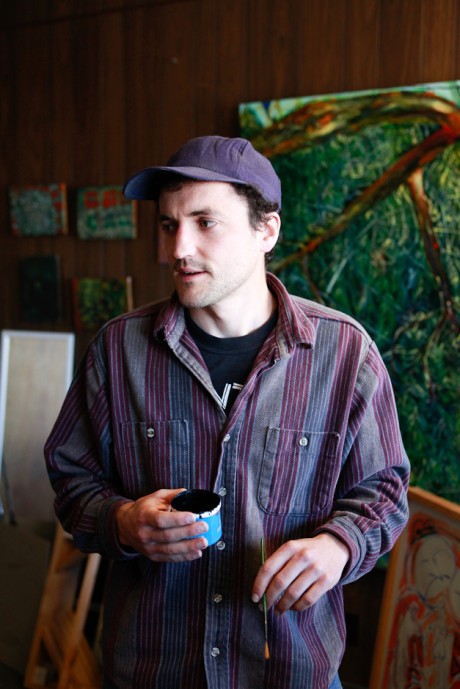
How would you describe your subject matter or the content of your work?
Landscape painting. That’s the easy, open-ended answer I guess— because it’s an all-encompassing term; it can address traditional ideas of environmental beauty or it can look at landscape in a more symbolic, political, or personal way.
What mediums do you work with?
Oil paint, watercolor, sometimes printmaking or sculpture.
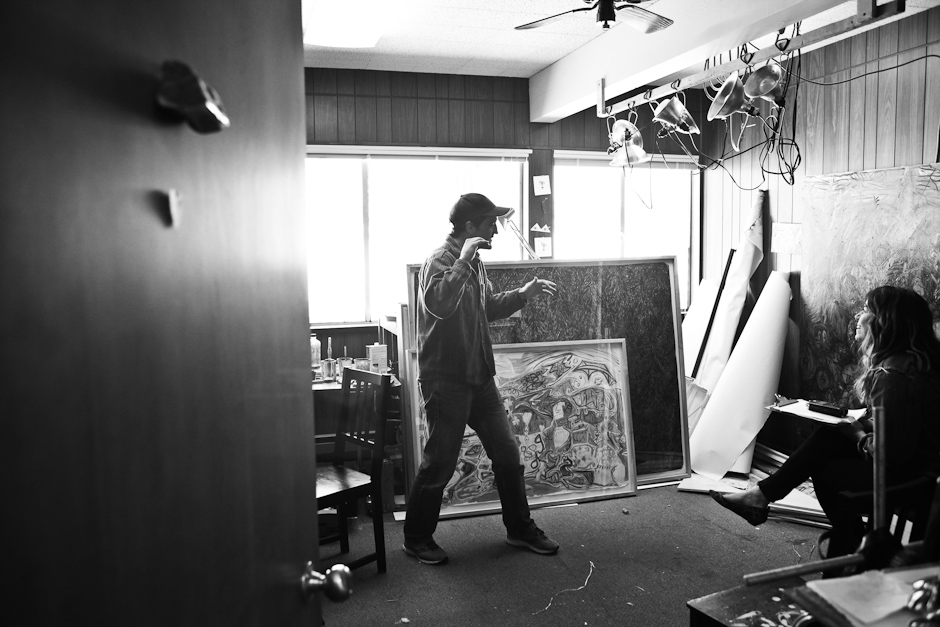
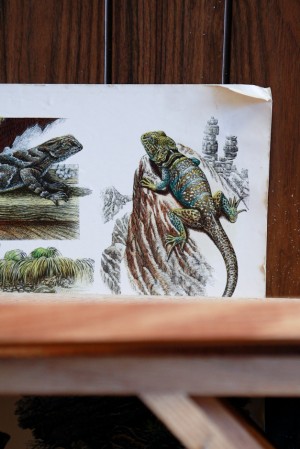


Your work is so densely layered, thick and almost claustrophobic— can you tell us more about this aesthetic?
I like to layer different styles and techniques on top of each other. I think through layering I make comparisons and contrasts. For instance, I like to layer traditional romantic landscape painting technique with 90s grunge poster/stoner drawing technique. I usually work on one layer and then stop and then come back later and work again— particularly with oil paintings because they take so long to dry. Certain works get pushed further than others and get more layers, more density. I continually use certain marks, building up a language of mark making.
Besides your art practice, are you involved in any other kind of work?
I do carpentry and woodworking. Usually how it goes is that I do a carpentry job and mostly focus on it and then after it’s done I take time to strictly work on painting. I’ve found that switching back and forth is most successful. I work for myself so it has allowed the flexibility I need to do both.
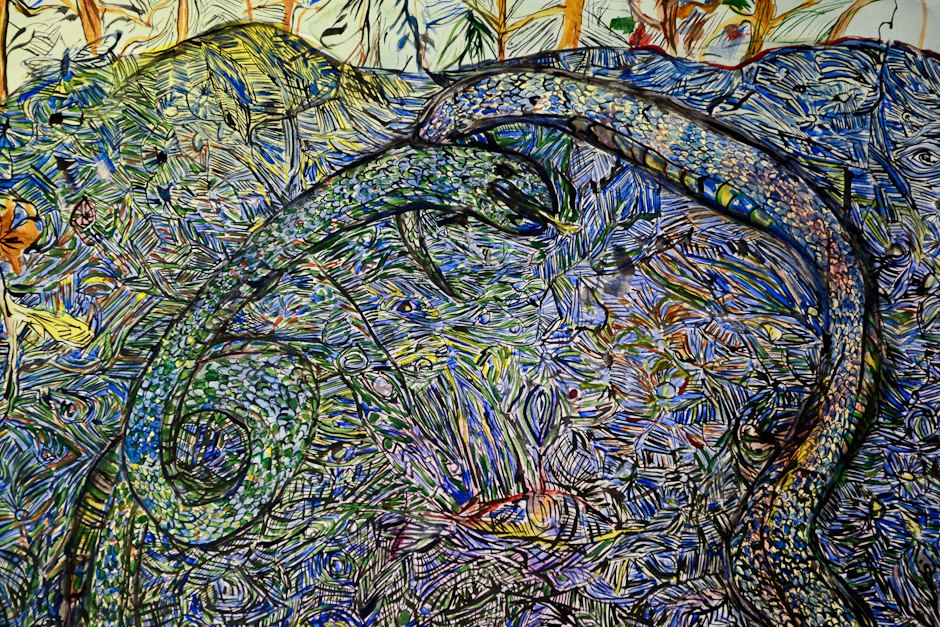
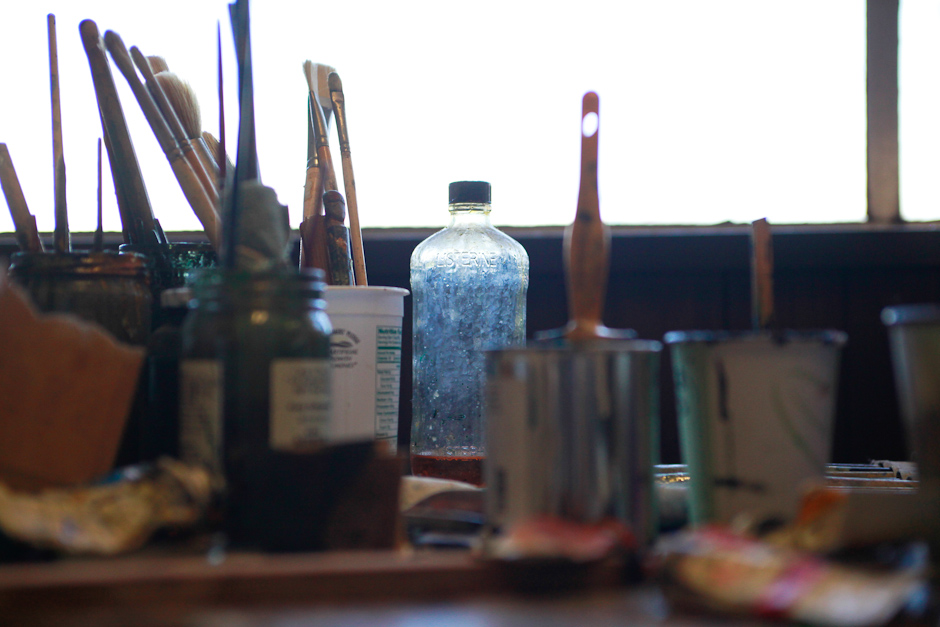
What influences outside the visual arts inspire and impact your approach to making work?
My carpentry influences my work a lot. I work on a lot of old houses. I like to peel back the layers of wallpaper, or previous remodels and see how structures and styles have changed over time. I value old techniques, and have a thorough understanding of materials and how they hold up. When I paint, I think a lot about the technical and conceptual history of painting, and how it builds upon itself, interacts, or deconstructs. I am also influenced by: music, movies, books, gardening, road trips, local history, collecting stuff, hiking/camping, science, and parenting/family. I am into a lot of different things. You could call it layered, or rich, or overwhelming.
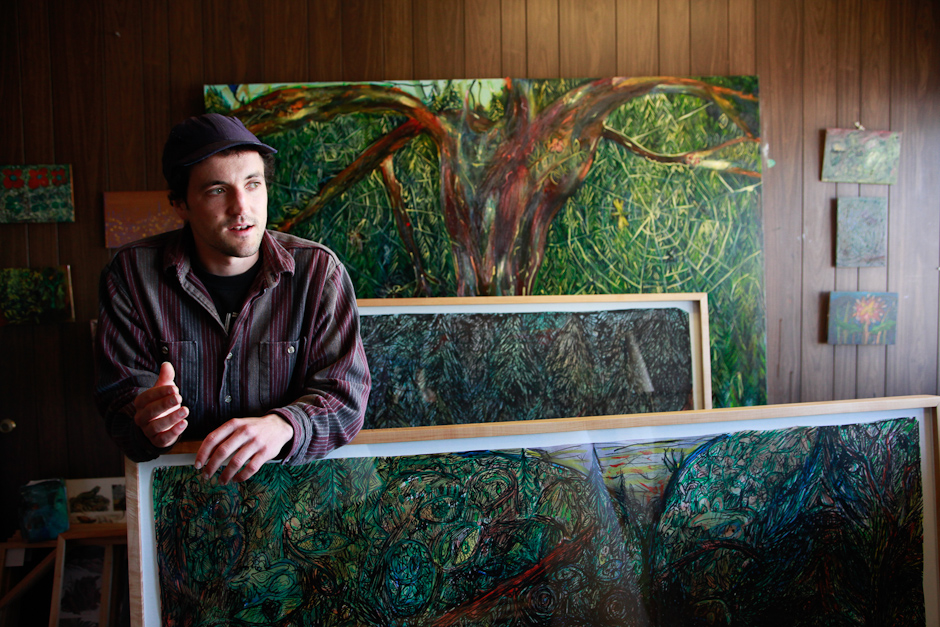
What does having a physical space to make art in mean for your process, and how do you make your space work for you?
Now that I think about it, with every large body of work I have made over the past 15 years, each has been in a new studio. I think the process of moving into a new studio is hard, but good. It forces me to re-examine the hundreds (thousands?) of paintings I have saved since I was a kid and see threads that exist over the years.
I also have an intimate and complex relationship with the town and region I make art in. After growing up here, I was privileged to leave and go to art school, and now that I’m back my experience away has lent me a different point of view— I’ve been able to connect to this place somewhat as a stranger while still being an insider, a person who is from here and knows this place intimately. I get much of the inspiration for my work from the people and landscape in this particular region.



Is there something you are currently working on, or are excited about starting that you can tell us about?
At the moment I am starting a large body of work consisting of 20-30 smaller oil paintings and some large wood relief carvings. I am also excited about doing a body of work using woodcut printmaking. It seems that I am always excited about new work and am constantly thinking about or sketching new ideas.
What risks have you taken with your work or for your work?
Art, and mostly painting, is something I have taken very seriously for over 20 years and it has been a challenge to build my life around. I currently juggle being an artist, a single parent and having a day job. I feel privileged to be able to make art and art has been totally and extremely satisfying, but it can also be a financial and emotional drain.
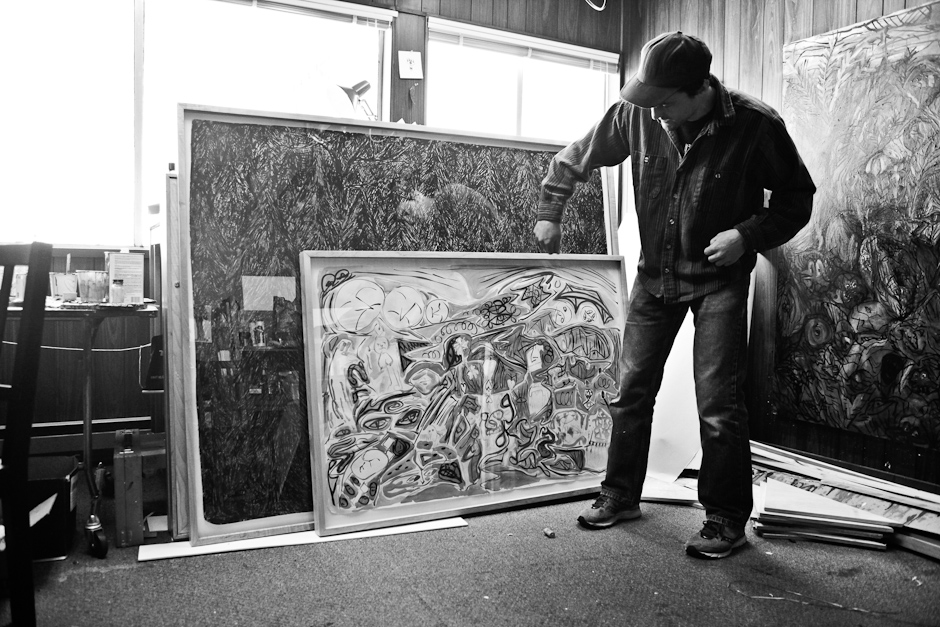
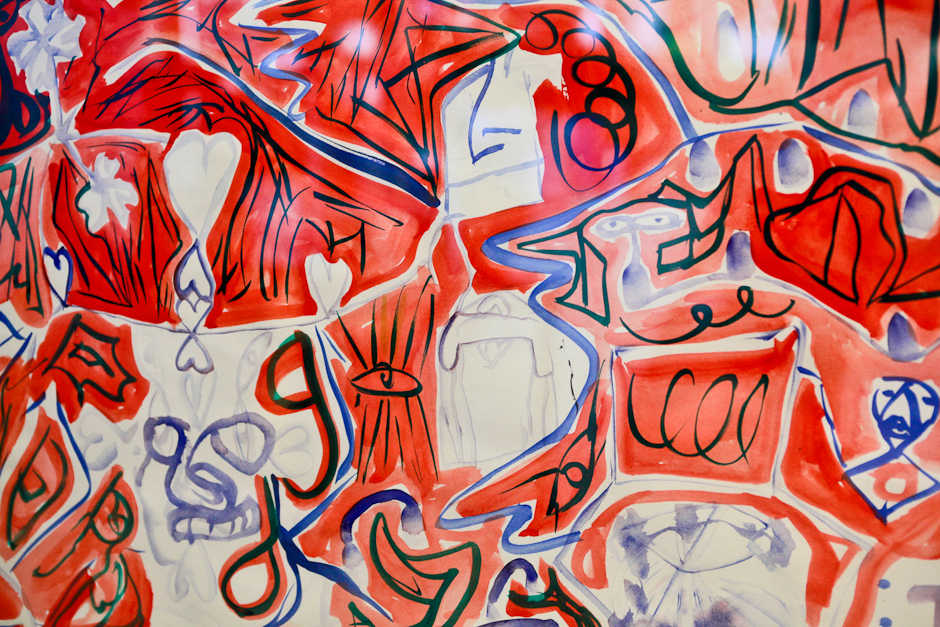
How do you navigate the art world?
I do it mostly from afar. I follow people/galleries online, and keep in touch with people who are in the art world. My gallery has been a good door to the art world, too. I also make trips to see museums and shows. This past year I have travelled to Los Angeles, San Francisco and New York to look at art. But in general I would say I keep to myself.
Words of wisdom?… a motto, favorite quote?
Work on art everyday. Take walks. Eat. Wear a respirator.
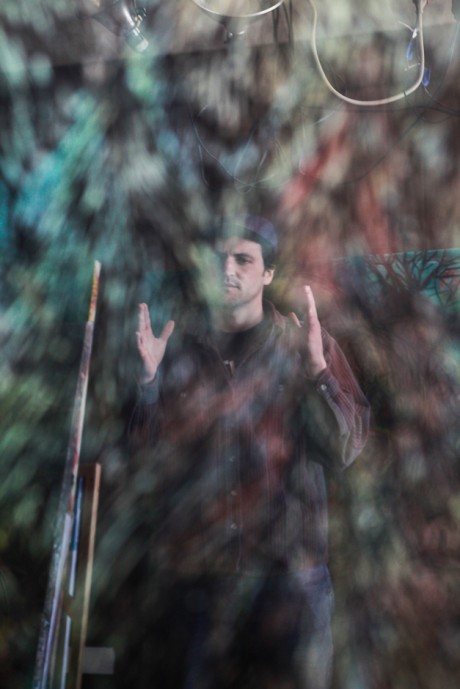
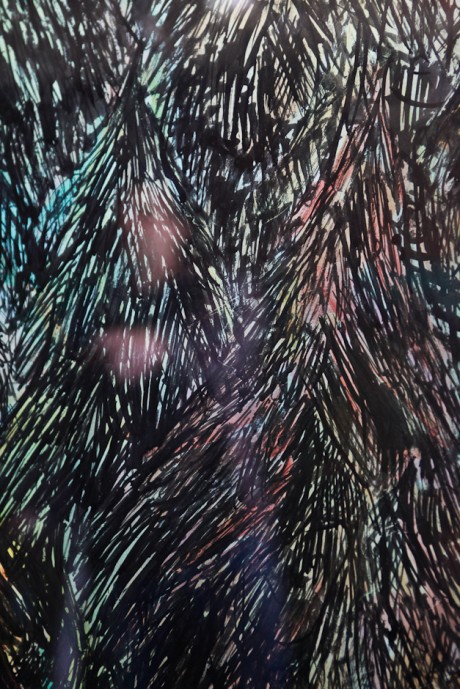
To see more of Peter’s work:
www.thepeterscherrer.com
